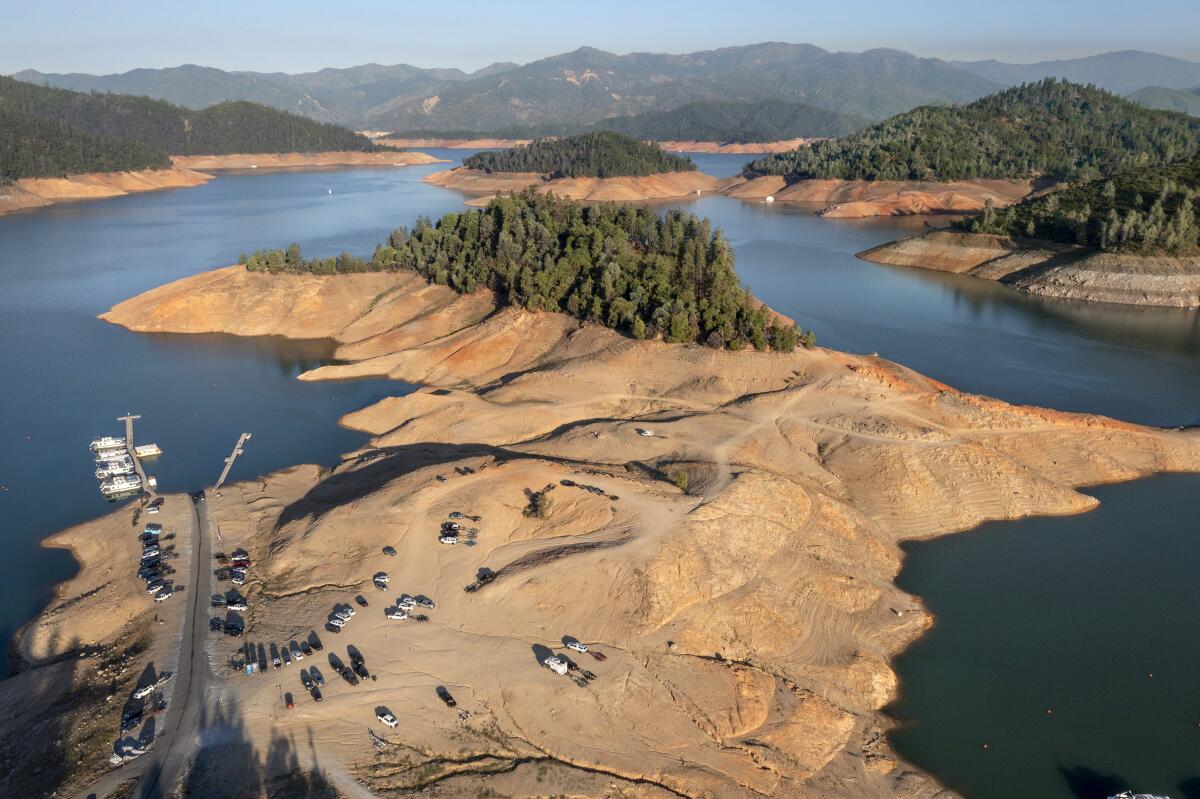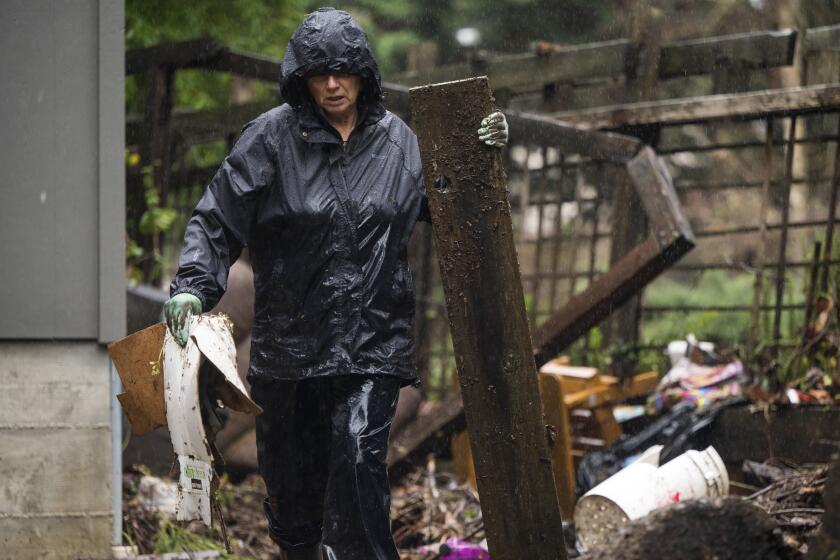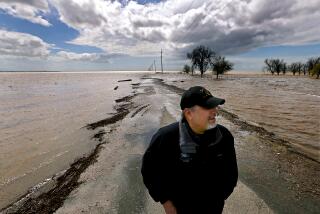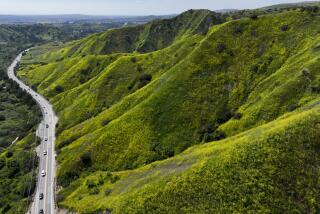Nearly all of California exits the worst drought categories in U.S. Drought Monitor

- Share via
The latest update from the U.S. Drought Monitor showed an extraordinary sight: Deep splotches of dark red and purple signifying the worst levels of drought have been erased from California’s map almost completely.
On Thursday, 0% of the state was in exceptional drought, and only a tiny portion of far Northern California, 0.32%, was in extreme drought.
It’s the first time that’s happened since April 4, 2020, when none of the state was classified in those categories, according to Richard Tinker, a meteorologist with the National Oceanic and Atmospheric Administration and one of the authors of the drought monitor.
The development is the result of powerful atmospheric river storms that have dumped trillions of gallons of precipitation onto the state in recent weeks.
Though the storms have created havoc, they have made a significant dent in drought conditions. Much of California has seen precipitation totals exceeding 4 inches, while several areas around the Sierra Nevada, Cascades and coastal ranges have recorded more than a foot in the storms.
It’s a remarkable turnaround for a state that only weeks ago was mired in its third year of drought. Just one month ago, 7% of California was in exceptional drought and 36% in extreme drought, the monitor shows.
Tinker said change was significant — especially for how quickly it happened.
“Typically, drought moves pretty slowly in California,” he said.
A battery of January storms has blanketed the Sierra Nevada in extraordinary snowpack, but will it last through the winter?
But officials cautioned that it’s still too soon to celebrate. California’s wet season typically runs until April, and there is a chance that the coming months could dry up. Last year, a soggy December gave way to the state’s driest ever January, February and March on record.
The latest seasonal outlooks from the National Weather Service’s Climate Prediction Center show an equal chance of wetness or dryness in most of Northern California through March, making it hard to predict what the coming months will bring.
However, there are at least two more atmospheric rivers slated to arrive in the coming days, and a chance of yet another one to close out January, state climatologist Mike Anderson at the Department of Water Resources said in a news conference Wednesday.
“We’re definitely looking to be in a better situation than we were last year, where everything shut off for a good three months, and there will be that opportunity to continue to make some additions to that snowpack before we get to April 1,” Anderson said, referring to the end-of-season date when snowpack in California is typically at its deepest.
The statewide snow water equivalent on Thursday was 227% of normal for the date and 104% of its average for April 1, state data show.
Many of California’s reservoirs have also seen boosts from the storms, including a few smaller ones that have recovered fully from drought-driven deficits, according to Molly White, the Department of Water Resources’ water operations manager.
But the state’s larger reservoirs still have a ways to go, and White said it will take more storms to truly reverse years of dryness. On Thursday, Lake Shasta and Lake Oroville were at 44% and 49% of their total capacity, respectively.
What’s more, Southern California’s other major water source, the Colorado River, hasn’t benefited much from the atmospheric rivers, and its largest reservoir, Lake Mead, is still perilously low.
“Most of the benefit has come to California, the reservoirs there,” Tinker said of the storms. He noted that Lake Mead is about the size of California’s six largest reservoirs combined, “so it’s something that takes an even longer time to deplete and an even longer time to recharge.”
“This system has been pretty much a drop in the bucket,” for Lake Mead, he said. “You’d rather have it than not have it, but it continues to be on a pretty good slide that’s been going on for a number of years now.”
The latest storm further swamps California, already reeling from widespread flooding, mudslides, washed-out roads and downed power lines.
But there’s no denying all that water has made a difference. Since the start of December, downtown Sacramento has reported 14.25 inches — about 10 inches above normal for the area for this time of year. The 16.10 inches received by Oakland is more than 11 inches above normal for this time of year.
The last 17 days in San Francisco were its “wettest span of 17 days since the Civil War” in 1862, Tinker said.
Yet it has also come at a cost. The storms have claimed at least 19 lives, caused significant flood damage and debris flows and strained the state’s aging infrastructure.
“We’re glad that it’s come this far, except for the problems it’s caused people with the flooding and the winds and such,” Tinker said. “Things are much better ... but we’re certainly not out of the woods.”
California Natural Resources Secretary Wade Crowfoot said there is also a difference between hydrologic drought and a state of drought emergency, which remains in place in California despite all the rain.
Conditions in the Pacific hurled a series of atmospheric rivers toward California, bringing rain, flooding and destruction.
The emergency declaration, issued by Gov. Gavin Newsom in 2021, reflects the effects of drought on communities, the environment and the economy, as well as local and regional water agencies’ need for state assistance, he told The Times recently.
Officials likely wouldn’t consider modifying the emergency until the rest of the rainy season plays out.
“We’re really in the first half of the game and we’re encouraged by the so-called points on the board, but there’s a lot more season left,” Crowfoot said. “While these big atmospheric rivers are helpful, really what we need for an average water year is sustained precipitation.”
More to Read
Sign up for Essential California
The most important California stories and recommendations in your inbox every morning.
You may occasionally receive promotional content from the Los Angeles Times.














